Centromere defects, chromosome instability, and cGAS-STING activation in systemic sclerosis
- PMID: 36400785
- PMCID: PMC9674829
- DOI: 10.1038/s41467-022-34775-8
Centromere defects, chromosome instability, and cGAS-STING activation in systemic sclerosis
Abstract
Centromere defects in Systemic Sclerosis (SSc) have remained unexplored despite the fact that many centromere proteins were discovered in patients with SSc. Here we report that lesion skin fibroblasts from SSc patients show marked alterations in centromeric DNA. SSc fibroblasts also show DNA damage, abnormal chromosome segregation, aneuploidy (only in diffuse cutaneous (dcSSc)) and micronuclei (in all types of SSc), some of which lose centromere identity while retaining centromere DNA sequences. Strikingly, we find cytoplasmic "leaking" of centromere proteins in limited cutaneous SSc (lcSSc) fibroblasts. Cytoplasmic centromere proteins co-localize with antigen presenting MHC Class II molecules, which correlate precisely with the presence of anti-centromere antibodies. CENPA expression and micronuclei formation correlate highly with activation of the cGAS-STING/IFN-β pathway as well as markers of reactive oxygen species (ROS) and fibrosis, ultimately suggesting a link between centromere alterations, chromosome instability, SSc autoimmunity, and fibrosis.
© 2022. The Author(s).
Conflict of interest statement
The authors declare no competing interests.
Figures
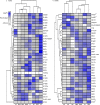

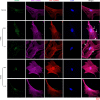
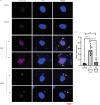
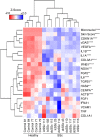


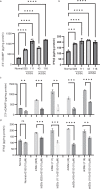
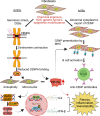
References
-
- Barnes J, Mayes MD. Epidemiology of systemic sclerosis: incidence, prevalence, survival, risk factors, malignancy, and environmental triggers. Curr. Opin. Rheumatol. 2012;24:165–170. - PubMed
-
- Gabrielli A, Avvedimento EV, T. Krieg T. Scleroderma. N. Engl. J. Med. 2009;360:1989–2003. - PubMed
-
- Denton CP, Khanna D. Systemic sclerosis. Lancet. 2017;10103:1685–1699. - PubMed
-
- Feghali-Bostwick C, Medsger TA, Jr., Wright TM. Analysis of systemic sclerosis in twins reveals low concordance for disease and high concordance for the presence of antinuclear antibodies. Arthritis Rheum. 2003;48:1956–1963. - PubMed
Publication types
MeSH terms
Substances
Grants and funding
LinkOut - more resources
Full Text Sources
Other Literature Sources
Medical
Research Materials

